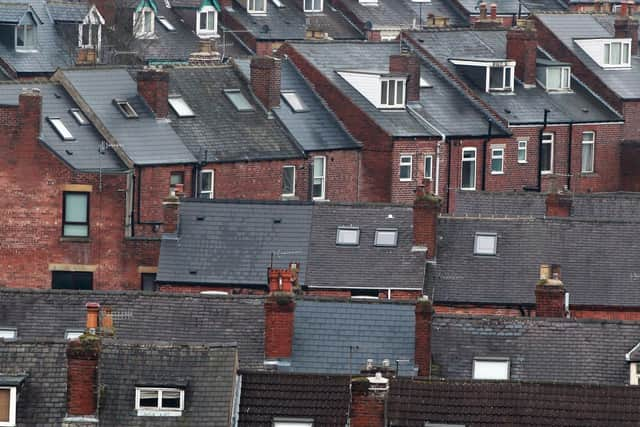Derbyshire council drawing up plans to bring more than 800 long-term empty homes back into use
and live on Freeview channel 276
Amber Valley is host to 842 long-term empty homes which have been vacant for more than six months. Meanwhile, there are a further 735 properties unoccupied for long periods due to being second homes or owned by people living in care homes or who have died.
The borough council is considering what steps it needs to take to bring this number down, with the overall combined figure of 1,577 empty homes comprising 2.7 per cent of all homes in Amber Valley. Among the 842 long-term empty homes are 387 properties which have been vacant for more than two years and 221 that have been left dormant for more than five years.
Advertisement
Hide AdAdvertisement
Hide AdThe council says the longer properties remain empty the more complaints the authority receives about the deteriorating condition of the building and its grounds and this increases the workload of staff. A report from the council says the authority would not look to bring in extra tax charges for owners of empty homes – including double, triple or quadruple charges.


The report details: “It has always been felt that proactive liaison with long-term empty property owners would prove more beneficial to the borough and the property owner rather than introducing a punitive and potentially administratively burdensome premium and for that reason the council does not at present charge the additional premium.” These charges have been brought in by neighbouring Derbyshire authorities.
Amber Valley says there are around 350 homes which would qualify for extra charges, once exemptions are applied, and the borough would only retain 10 per cent of the profit of that charge.
A report says: “Whilst this looks like quite an easy gain in the first instance the practicalities of enforcing it are potentially burdensome with collection problems and avoidance issues. The burden of administering this could far outweigh the relatively small gains.”
Advertisement
Hide AdAdvertisement
Hide AdCllr Tony Holmes, the council’s cabinet member for housing and public health, wrote in a report: “The council recognises the impact that long-term empty properties can have, particularly when there is a shortage of affordable housing across the borough.
“Empty properties are a wasted resource, both in a practical sense, by limiting the numbers of available family homes, but also financially for the owner, where any potential income through rental or sale is lost. Properties that have been unoccupied for an extended period can also have a negative effect on the amenity of a community, becoming focal points for anti-social behaviour and as structurally unsafe buildings.”
The council’s empty home strategy up to 2025 aims to return vacant properties to use as “good quality family homes”. It details that council officials will tailor their approach to owners of empty homes and take action depending on their response (or lack of) and their indicated situation. For instance, if a home is in the process of being sold or if there is a lack of finance for repairs then this would be taken into consideration.
The council would prefer to avoid formal enforcement procedures if they can be avoided. However, it can look to enforce the sale of a property and then recover the cost of this process through the sale price itself. It can also compulsory purchase the property from the owner and then look to repair and sell it itself or rent it out as a council home.
Advertisement
Hide AdAdvertisement
Hide AdAlongside this, the council can issue an empty dwelling management order in which the authority or one of its partners manage the property for up to seven years and fund renovations and then looks to recover costs through rent.